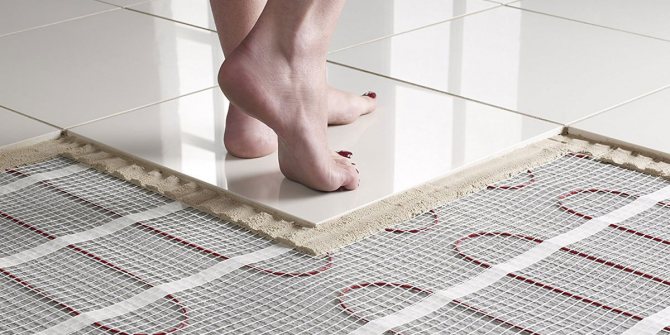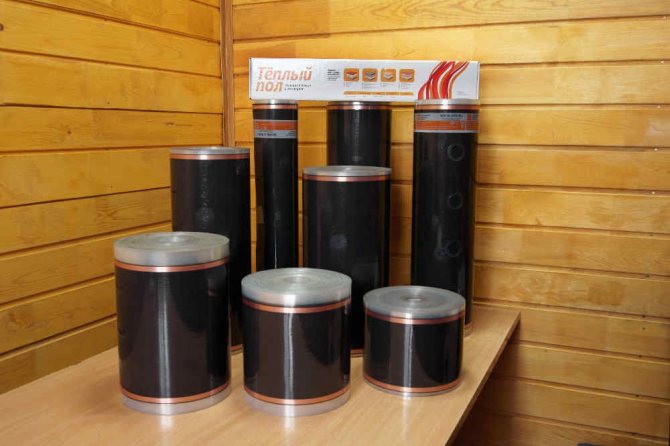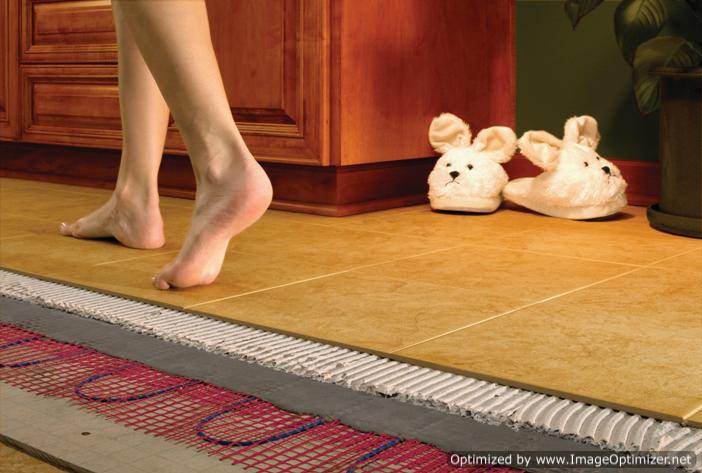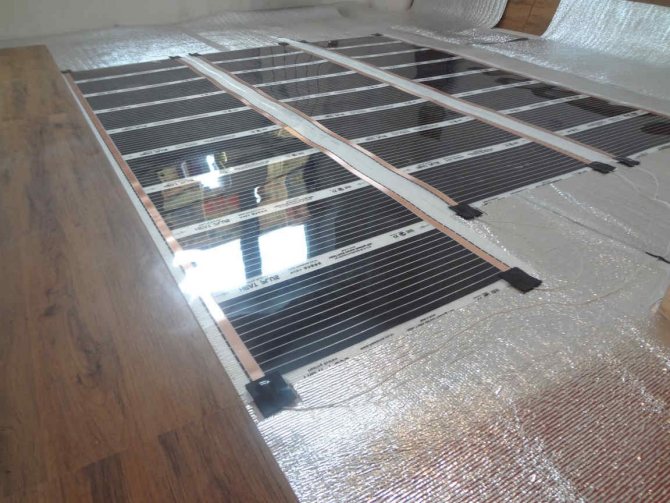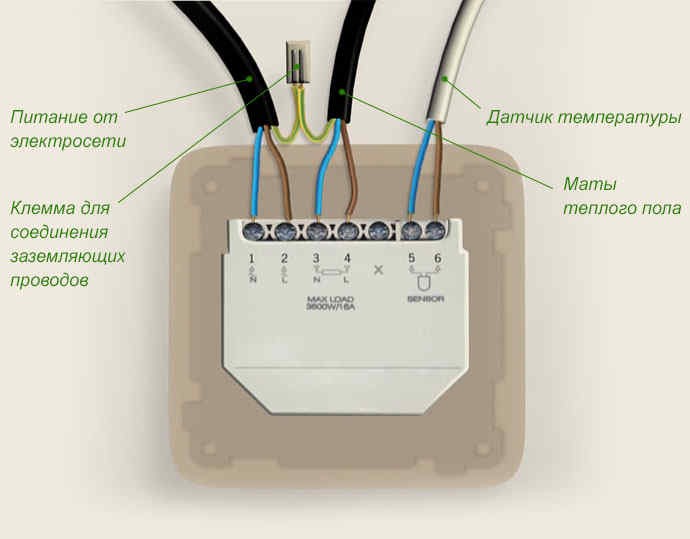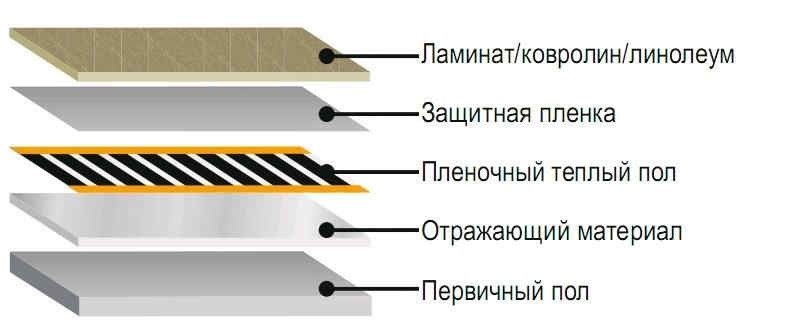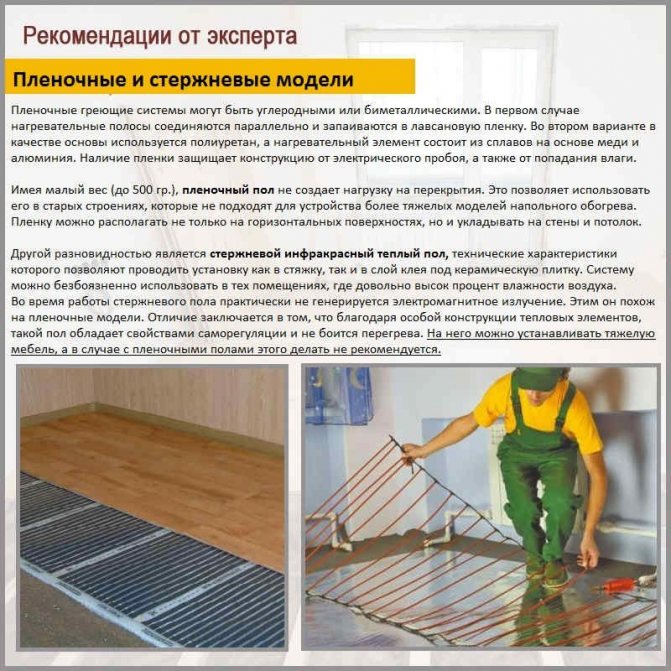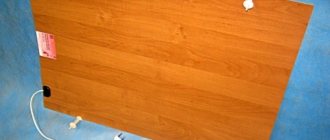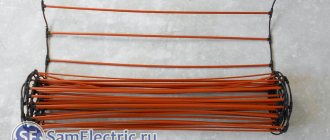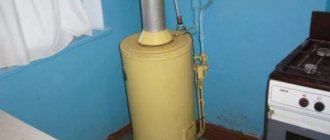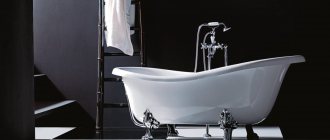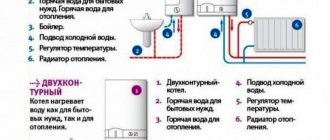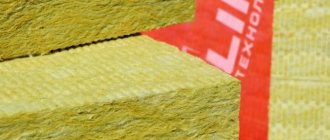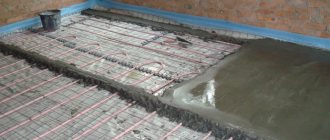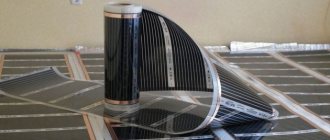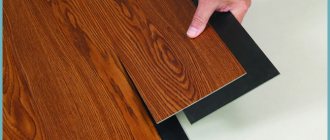The craze for environmental friendliness, as well as the slight paranoia that people experience in front of everything new, gave rise to many legends about the dangers of warm floors. Articles and TV programs are full of sensational exposing materials in which "scientists have convincingly proved" this or that fact. However, sometimes there is more emotion in the evidence than in numbers. Let's try to find out if a warm floor is actually harmful to health by looking at the problem from the point of view of current standards and sanitary standards.
What is really worth paying attention to?
In this article, we deliberately omit the issues of comfort and temperature distribution in rooms heated with underfloor heating (TP). Often the answer to them depends on subjective feelings. The question of the compatibility of heated surfaces with various types of floor coverings is also left aside. The release of carcinogenic substances from facing materials, their temperature deformations and other negative factors are reduced to permissible values, if the instructions of the manufacturers of construction and finishing products are strictly followed. For example, if you use: heat-resistant tile adhesive, laminate or linoleum, the markings of which indicate the admissibility of use in floor heating systems, then all the problems listed above are removed by themselves.
However, there are really serious moments that require the closest attention:
- permissible level of influence of electromagnetic radiation;
- permissible level of influence of infrared radiation;
- electrical safety;
- Fire safety.
In this regard, we will consider how safe it is to install water and electric floor heating systems in residential premises.
Surface ceramic floor coating is harmful
The tile has a high heat capacity, which means that heat transfer and radiation produce a slow but constant effect. In this regard, in order for the room to warm up, a sufficient amount of time is needed, but at the same time the heat will remain even after the system is turned off.
Warm floor under ceramic tiles
In the kitchen, such systems negatively affect the human condition, especially the health of women who spend a lot of time in the kitchen. Elevated temperatures negatively affect the legs, which causes blood to flow upward. Thus, due to heat radiation, gynecological and vascular diseases can develop.
The conclusion is this: if you stand on a ceramic coating for 3-4 hours a day, then you cannot avoid negative effects on the body. If you rarely walk on such a surface, then there will be no harm.
Therefore, it is recommended to choose a ceramic floor covering for bathrooms.
Water heated floor
The greatest harm to a water heated floor is a critical local increase in the temperature of the floor covering up to 30-40 ° C. Here we are not talking about comfort, but about the inadmissibility of using such a system. In most cases, the reason lies in gross errors in the design of the thermal installation. For example, a water heat exchanger can be used as the main source of heating in a room with a large area, and its external thermostatic regulator (with an automatic detector) can be located too far from the heated surface. Such a system will have a high temperature inertia. After all, the air in the room warms up slowly, while individual areas of the coating are already warming up to critical values.
Such constant extreme operation at high boundary temperatures significantly reduces the service life of pipelines, which threatens to violate their integrity, leakage and flooding of the premises from below. In addition, an improperly installed underfloor heating water floor can sometimes cause condensation (especially in the corners of external walls). Condensation, as well as sharp temperature fluctuations, can harm household appliances, in which electrical contacts are oxidized.
Important! With proper installation and operation, there is virtually no harm from a warm floor to the health of people who do not suffer from chronic diseases. Therefore, such a heating system for housing for humans and pets is the safest.
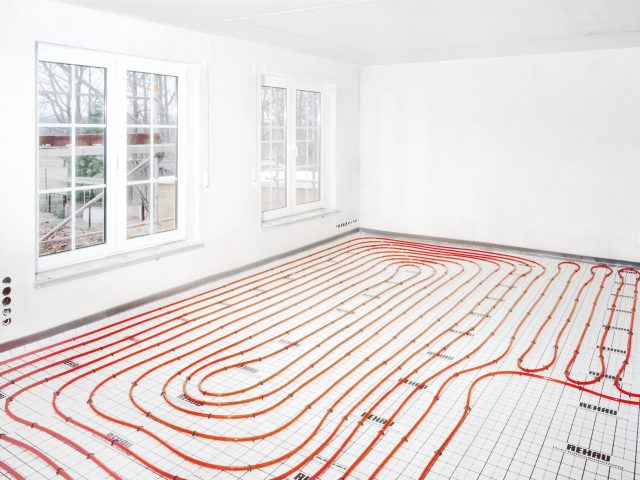
Possible problems from underfloor heating
Basically, problems from underfloor heating can arise only with the wrong choice of the type of device and installation errors. Choosing one or another type of heating, you need to strictly adhere to the technical regulations and build on the size of the room.
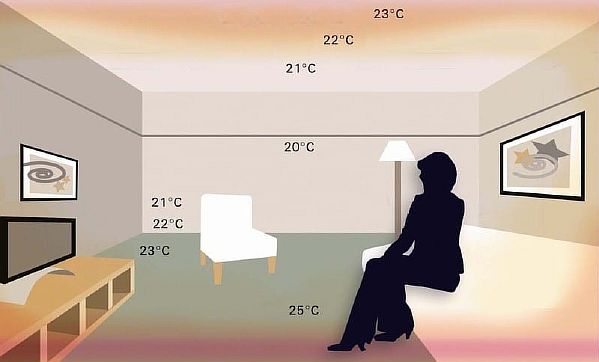

It is worth noting the following mistakes that are often made when installing underfloor heating:
- When installing the water floor, the collector is placed below the main level, which leads to periodic filling of the system with air. This can provoke blockage of pipes, and, as a result, disrupt the process of circulation of the coolant. To prevent this from happening, the collector should be located at the highest point, and equip the structure with a device for automatic air collection.
- When installing cable floors, the outer winding of heating elements is often damaged. Not infrequently, a core break occurs, or a current of an inappropriate power is supplied, which leads to a burnout of the system. Installing a voltage stabilizer will help to avoid this.
- When laying an infrared floor, the film is bent, thereby losing contact. Therefore, work with the film should be carefully, and when pouring the screed, choose a mixture with fine fractions.
In conclusion, we can conclude that with proper installation and operation, heating floors do not harm human health. After all, the principle of operation of underfloor heating is radiation. The Sun acts on the same principle, it heats the Earth, and it already gives us heat.
Electric underfloor heating
There are the following most common types of electrical transformer substations - cable (single-core, two-core) and infrared (IR) film. Electric heating devices in the form of thin mesh mats are nothing more than a more technological type of heating cables. Like all conductors, with a current flowing in them, they propagate an electromagnetic field around them, the measurement of which is carried out in units of magnetic field induction and is expressed in Tesla (T or T) and microteslas (μT or μT).
Influence of electromagnetic radiation on humans
The epidemiological survey carried out by the sanitary service of the Russian Federation "Survey of the population permanently living in conditions of exposure to electromagnetic fields of power lines" made it possible to determine the value of the safe intensity of these fields. Thus, it was found that the value of the flux density of magnetic induction under long-term exposure that does not lead to negative consequences (oncological and other diseases) is 0.2-0.3 μT. For example, let's give the flux density of magnetic induction generated by some household electrical appliances:
| Type of bit electrical appliance | Max μT | Min μT |
| Iron | 0,1 | 0,4 |
| A vacuum cleaner | 0,2 | 2,2 |
| Television | 0,1 | 2,0 |
| Washer | 0,1 | 2 |
| Microwave | 4,0 | 12 |
| Electric stove | 0,4 | 4,5 |
| Drill | 2,2 | 5,4 |
| Underfloor heating cable single-core | 2 | 3 |
| Underfloor heating cable two-core (shielded) | 0,2 | 0,5 |
As can be seen from the table, a two-core shielded cable for underfloor heating almost completely meets the requirements of sanitary standards for the flux of electromagnetic induction.
Although the average level of the flux density of magnetic induction for the planet Earth is 50 μT, it belongs to the natural background, therefore it does not have a negative effect on healthy organisms.
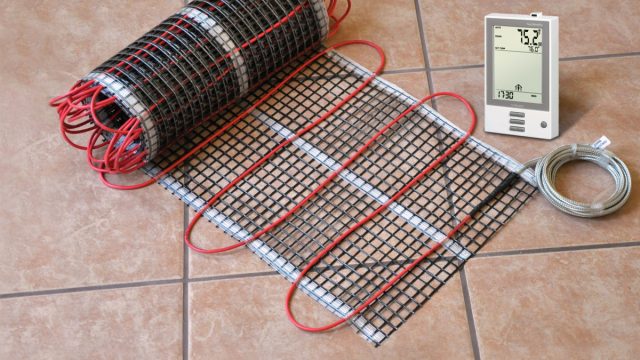

How to choose a cable TP and protect yourself as much as possible?
- When buying a specific model of a cable product, in order to minimize the harm of a heated floor, you should pay attention to the environmental safety standard. Solid products must have a certificate of compliance with the ISO 14000 standard.
- It is recommended to give preference to a two-core shielded cable. That is, it must have not only reliable electrical insulation, but also a shielding metal braid that completely extinguishes radiation, and also performs the function of grounding.
- Electromagnetic radiation can have a significant impact on health only in the case of a prolonged stay in the zone of its greatest intensity. Therefore, if you are concerned that cable floor heating is unhealthy, then it is better to lay it in those parts of the premises that are not areas of rest or frequent stay of people.
Oops! When buying a cable TP, you should seriously consider reliable manufacturers under brand names. This will provide an essential guarantee of maximum compliance of the product with sanitary and building codes.
Infrared radiation effects on living organisms
As well as for electromagnetic radiation, there are sanitary standards for infrared. They are spelled out in the hygienic requirements of SanPiN 2.2.4.548-96. The table shows some indicators of the permissible radiation intensity of the IR source, in W / m2:
| The naked area of the human body (%), which is exposed to radiation | Wavelength, μm | |||
| 1,5 | 3,0 | 4,5 | 6,0 | |
| no more than 40 | 30 | 55 | 70 | 55 |
| no more than 20 | 60 | 105 | 135 | 105 |
These standards are valid for a long stay of a person in a room with an active infrared heating source.
However, in reality, the IR spectrum is much wider. It occupies the range λ = 0.74 microns ... λ≈ 1-2 mm, which, according to the degree of impact on the human body, is divided into three parts:
- IR-A (0.76-1.5 microns) - the deepest penetration into the subcutaneous layers and skin (up to 4 cm). Used in heaters that are used for infrared saunas;
- IR-B (1.5-3 microns) - penetration under the upper layers of the epidermis to a depth of 0.5 cm;
- IR-C (> 3 μm) - radiation is completely absorbed by human skin. The maximum penetration does not exceed 0.2 mm.
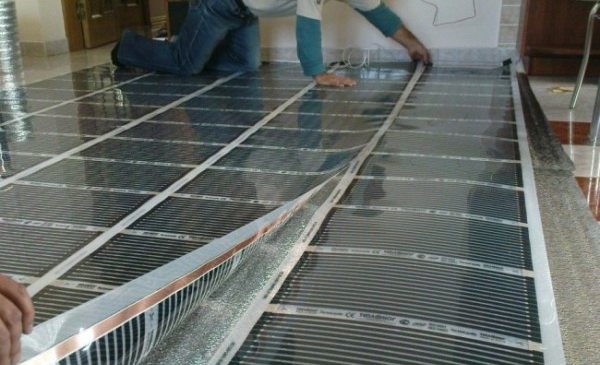

How do you choose the “right” IR film?
All three ranges are present in the waves emitted by the infrared film. But the predominance of some energies over others changes during the functioning of the IC TP. As the temperature rises, the radiation spectrum goes over to the short-wavelength range, and upon cooling, into the long-wavelength range.
What is the safest wave size for the human body? At a normal body temperature of a healthy person, 36.6 ° C, the peak of infrared radiation falls on a wavelength of 9.6 microns. Thermal energy, close to this value, has a neutral effect on the body and is perceived by us as the most comfortable.
Many manufacturers of infrared emitters from China as advertising declare the wavelength of 9.6 microns as the main working one. At the same time, pointing out how a warm floor affects health, they emphasize that the body will be warmed up to a depth of 4 cm.In fact, waves of this length refer to the IR-C standard, according to which only surface heating of the body occurs, without penetration under skin.
Important! When purchasing an infrared film TP, you should pay attention to its specification. If the manufacturer indicated in it not one value of the IR wave, but the operating range, then he and his products are trustworthy. For most products, the boundary frames of the prevailing wavelengths are in the range of 3-10 microns.
Warm electric floors pros and cons
Today there are such types of warm electric floors:
- Cable - this is the name of all types of underfloor heating, which are based on a special cable. This type of heating is already outdated due to some technical characteristics, but is still in demand, since it is the most inexpensive system. There are self-regulating, one- and two-core, shielded or unshielded cable warm electric floors. The pros and cons will tell you more precisely about their properties.
- Heating mats are a type of cable floor, but with a more simplified installation method, with ready-made power calculations and a higher cost.
- Infrared film consists of the thinnest base, inside of which there are heating elements. It produces infrared radiation, similar in its properties to the beneficial rays of the sun. This type of warm electric floor is the most expensive, but at the same time energy saving.
It is pointless to look for the disadvantages of an electric floor heating, since it is only one of the components of this system. Yes, it is his heating elements, whatever they may be, that generate heat, but if you miss something during the installation of the structure or use insufficient quality materials, then he is more likely to become a "victim" of a negligent builder than a "culprit" of the cold in the room.
Among the advantages of cable floor heating are the following:
- quite low price compared to other types of underfloor heating;
- it can be placed under any floor covering;
- has a fairly long service life.
As consumers note, this type of electric floor has slightly more disadvantages:
- One of the most significant disadvantages of this floor is that if a part of the cable breaks, the entire system will fail. Considering that it lies under the flooring and the screed layer, it will not be cheap to repair it.
- He has more heat loss than a film floor, which means that energy consumption is higher.
- Installation of this structure takes a lot of time.
- You cannot put furniture on it, therefore, having laid it on a certain area of the room, it will be difficult to rearrange it, since you must always adhere to these frames.
- The thickness of the cable underfloor heating is quite large, so it will be inappropriate in rooms with low ceilings.
Otherwise, if the installation was done correctly, then such a heating system will delight its owners with warmth for many years.
Fire and electrical safety
In this category, the best performance is shown by a water-heated floor. On the contrary, electric heating systems (with the exception of self-regulating ones) can overheat and fail due to installation errors or subsequent incorrect operation. For example, when the thermoelement is placed shallowly relative to the floor covering densely packed with furniture. Careless installation also results in the risk of a short circuit and fire in the thermal electrical installation.
With regard to the danger of electric shock, harm from a warm floor looks rather unlikely. After all, all certified systems have high-quality insulation. It reliably protects the internal wires from moisture penetration, therefore, the probability of electric shock is practically zero. For example, both cable and film heat-insulated floors are sometimes used for installation on the streets (for gazebo floors, sidewalk paths in backyard plots, for heating greenhouses, etc.) or in damp rooms. Of course, in such extreme conditions, they resort to enhanced protective measures, but such a possibility is allowed.
In order to practically eliminate the risks of harm to health or damage to property by the warm floor, it is necessary to adhere to the standard conditions for the safe conduct of electrical work and the subsequent operation of electrical equipment.They are detailed in the PUE - electrical installation rules. The connection of the electrical transformer substation, regardless of its type, should be carried out directly from the input switchboard through separate thermal and current protection machines. In the event of short circuits or conductor insulation faults, these devices will instantly de-energize the electric floor heating system.


Installation of infrared floors
First, we plan, the arrangement of warm floors from the area of the apartment, we exclude the space that is occupied by large-sized furniture, including a strip about 200 mm wide along the walls. We measure the space that remains unoccupied and determine the required amount of infrared film in square meters.
Further, according to the planned plan, we install a heat-reflecting screen on the floor to direct the radiation into the room, we glue all the joints of the screen with tape. The next stage is the laying of the infrared film, the film must be smoothed down with copper tires, when cutting it, you need to look at the special markings, along which it should be cut strictly in sections.
We connect the sections of the film using wires and clips, they are connected on one side of the sections, and on the other side they are simply insulated using special insulation supplied with the infrared film floor.
This is followed by the connection of the thermostat, for this you need to put a separate outlet, to which you connect the electrical wires directly from the electricity meter. The thermostat is supplied with a diagram for its connection, according to which its installation is carried out.
Next, the thermal sensor is connected, from the thermostat we lead its wires to the nearest section of the film and glue it with adhesive tape from below to the graphite sections (between the reflective screen and the film).
We turn on the warm floor into the network and check the work - if everything is in order, we put the floor covering on top (if the warm floor is laid under or carpet, then it must be covered with fiberboard for safety) and the floor is ready to supply heat to the room.
conclusions
From the presented facts, it becomes obvious that water TP is the safest for humans and pets. This is followed by a two-wire shielded cable electrical TP. Due to the effect on living organisms of the magnetic flux and a wide spectrum of infrared radiation, infrared warm floors are harmful to health a little more. Despite their minimal cost, single-core unshielded heating cables are the least desirable for installation in rooms with constant presence of people.
https://www.youtube.com/watch?v=mESjsvnlgzA
Is it harmful to health: the main myths
Any professional will quickly and easily be able to explain the principle of operation of a warm floor, regardless of its type, but most homeowners do not have sufficient knowledge in this area, therefore, one can conditionally divide the myths about the dangers of a heating element into several points:
Dangerous infrared radiation
First of all, this concerns an electric infrared warm floor, which uses a special film that heats the surface by acting on electromagnetic waves. Due to the lack of information, many believe that these rays are harmful to a living organism, but this is far from the case. Of course, exposure to ultraviolet radiation or high-power magnetic radiation is dangerous to human health, but in floor heating systems this figure is much lower than that of any other household appliance, even a cell phone. Therefore, the electromagnetic waves emitted by heating film are absolutely harmless to the body and surrounding objects.
Raises dust and is harmful to allergy sufferers
This myth has no basis, since the heating element inside the screed gives its temperature to the floor covering in the form of linoleum, ceramic tiles or laminate, and does not use air as convection of heat, as heating radiators do.The warm floor does not produce, and even more so does not spread, harmful dust inside the room, the air masses do not come into contact with it, but interact with the main, finishing coating, respectively, if you keep it clean, then there will be no problems.
Dries the air
As in the previous paragraph, it should be noted that there is no direct contact with air in such a system, the floor surface heats up and transfers heat to the surrounding objects, furniture and walls. Yes, the air also heats up and evaporates moisture, but its circulation is much slower than that of convection radiators. This problem can be solved by adding steam generation and air humidification devices to the room.
Creates an outflow of blood from the head to the legs
This myth arises from the opinion that the warmer a person's limb, the more blood rushes to it, yes it is, and this is reliable information, but such problems arise only when a certain temperature is reached, which should be at least 45-60 degrees. In floor heating systems, the maximum temperature of the coolant is 45 degrees, and the finishing surface, when fully warmed up, is no more than 25-30 degrees, which is very comfortable for both children and adults.
Uncomfortable sleeping on the bed
This is the only myth that is truly justified. When a person is awake, the temperature of the warm floor and inside the room, comfortable for him, is 25-28 degrees, and during sleep no more than 18 degrees. Therefore, when heating a bedroom with warm floors, many are wondering about comfort. This problem can be easily eliminated by installing a thermostatic regulator on the manifold of the water system or a thermostat for electrical power supply on the heating element of the mat. Before going to bed, the owner simply sets the required temperature in the bedroom on the regulator, and the set parameter in automatic mode will be maintained throughout the night.
Evaporation from the floor covering
Regardless of the type of floor finish, be it ceramics, linoleum or laminate, a high temperature is required to release vapors and gas from these materials, only under this condition the coating will heat up excessively and emit harmful substances. The warm floor is designed to operate within permissible parameters from 0 to 45 degrees, which is a comfortable temperature for a person and not sufficient to overheat the material and create an unpleasant odor.
Thus, all of the above myths about the dangers of underfloor heating are greatly exaggerated and far-fetched, they can be easily refuted by studying all the physical and chemical properties of the floor covering, as well as the technical indicators of a properly installed system.
Myth number 5
The "warm floor" system using electric cables creates a high electromagnetic field that affects human health.
Underfloor heating can be done with mat with built-in cables. I put the mats on the concrete screed. The cable is covered with glue, which has almost the same composition as concrete. The heaters are closed. When installing the heating, the cable heats up the screed and the layer of glue. Through these layers, heat is transferred to the flooring of the room.
We recommend: How is the length of the underfloor heating pipe calculated?
In this case, an electromagnetic field is created, but it is negligible. It has no effect on a person. Household appliances, which are also sources of an electromagnetic field, cause more harm. These include televisions, computers, microwaves, and cell phones. The "warm floor" system will not harm humans and pets.
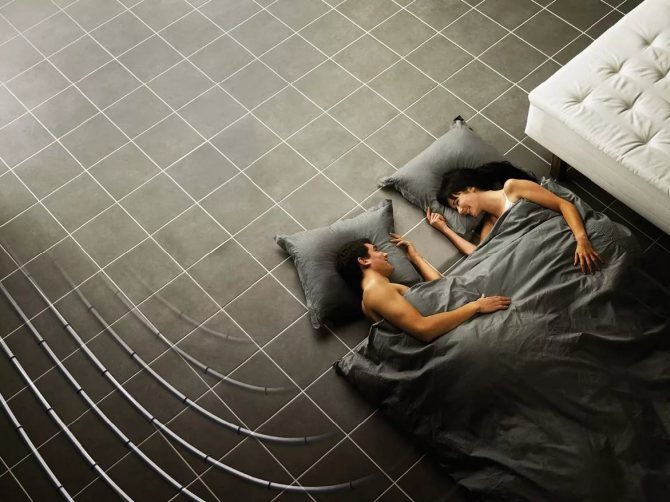

In city apartments it is possible to install only electric type underfloor heating. The water circuit cannot be laid. The temperature of the liquid in the pipes will completely depend on the temperature of the water in the central system.
A decrease and an increase in the DHW supply pressure will affect the operation of the underfloor heating. Changing the mode can lead to emergency situations.In private houses with autonomous heating, a water underfloor heating is the optimal heating solution.
YouTube responded with an error: Access Not Configured. YouTube Data API has not been used in project 268921522881 before or it is disabled. Enable it by visiting https://console.developers.google.com/apis/api/youtube.googleapis.com/overview?project=268921522881 then retry. If you enabled this API recently, wait a few minutes for the action to propagate to our systems and retry.
- Similar posts
- How to install an electric underfloor heating?
- Can laminate flooring be laid on a warm floor?
- How to install a warm floor in the house?
- How to make the underfloor heating strap correctly?
- How does the floor heating automation work?
- What is included in the underfloor heating cake?
Infrared underfloor heating under the tiles. Can a film floor be installed under tiles?
Infrared underfloor heating is intended primarily for "dry" installation under laminate, linoleum, PVC tiles, carpet. To attract customers, many manufacturers claim that their films can be laid in a screed or tile adhesive under the tiles.
There are 3 main reasons why you shouldn't do this:
- First, the film has poor adhesion. If you immediately pour a screed on it or lay tiles, it will turn out to be floating. Because of this, the concrete will have an empty sound when tapped, and if something heavy is dropped on the floor, then the screed may crack at all.
Sometimes, for better adhesion of the mortar to the top layer, they try to make many cuts and serifs. But imagine how difficult it will be to isolate it all. Moreover, you need to insulate reliably and durable, so that later you do not break the tile if you start to be shocked by leaks and the RCD will constantly work.
- Secondly, the composition of the film itself. All tile adhesives and screeds are alkaline. Over time, polyester film (PET) will erode, regardless of the thickness or number of layers. In the best case scenario, you will get short circuits and sparks from exposed electrical connections.
- Third, there are rod and cable electric floors that are ideal for under-tile installation. When installing them, you do not need to invent or invent anything, they are specially made for "wet" installation.
But there are several installation options, which are discussed below.


